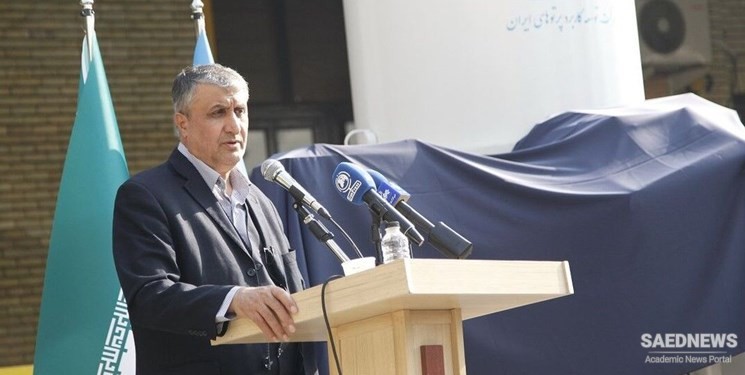“The reloading and recharging of Tehran's Gamma system initially have the impact of reducing the time required for irradiating medical items to two and a half minutes,” Eslami told reporters.He pointed out that such move will in turn boost efficiency by more than four times.
Eslami explained that irradiation of medical consumables is a standard requirement to ensure their safety within the healthcare sector.
He further pointed out that the Tehran Gamma Irradiation Facility plays a major role in this respect, providing services to the country’s healthcare system round the clock.
In relevant remarks earlier in December, Eslami said that the enemies have failed to hinder the progress of Iran’s peaceful nuclear energy program through illegal sanctions.
He said that the AEOI’s “self-confidence” led it to take the path of progress and render problems such as sanctions and terror ineffective.
“The AEOI has a strategic task to build power for the country. Of course, the enemies tried to prevent Iran’s progress through sanctions, but they failed,” Eslami added.
Eslami also said the AEOI plans to generate 20,000 kilowatts of nuclear power by 2041.
"The Islamic Republic pursues a completely peaceful nuclear goal based on international regulations and the principles of the International Atomic Energy Agency (IAEA)," he added.
Iran's nuclear chief further said that AEOI has managed to produce precise tools that are being used in 150 steel companies and industries, noting that the country has become capable of exporting these tools.
Over the past years, Iran has recorded many nuclear achievements in defiance of US sanctions as well as hurdles created by the West.
Iran has been closely cooperating with the IAEA as a signatory to the Nuclear Non-Proliferation Treaty (NPT).
The Islamic Republic showed to the world the peaceful nature of its nuclear program by signing the 2015 nuclear agreement, formally known as the Joint Comprehensive Plan of Action (JCPOA), with world powers.


 Iran Advises Western Countries to Take Needed Political Measures for JCPOA Talks
Iran Advises Western Countries to Take Needed Political Measures for JCPOA Talks














































